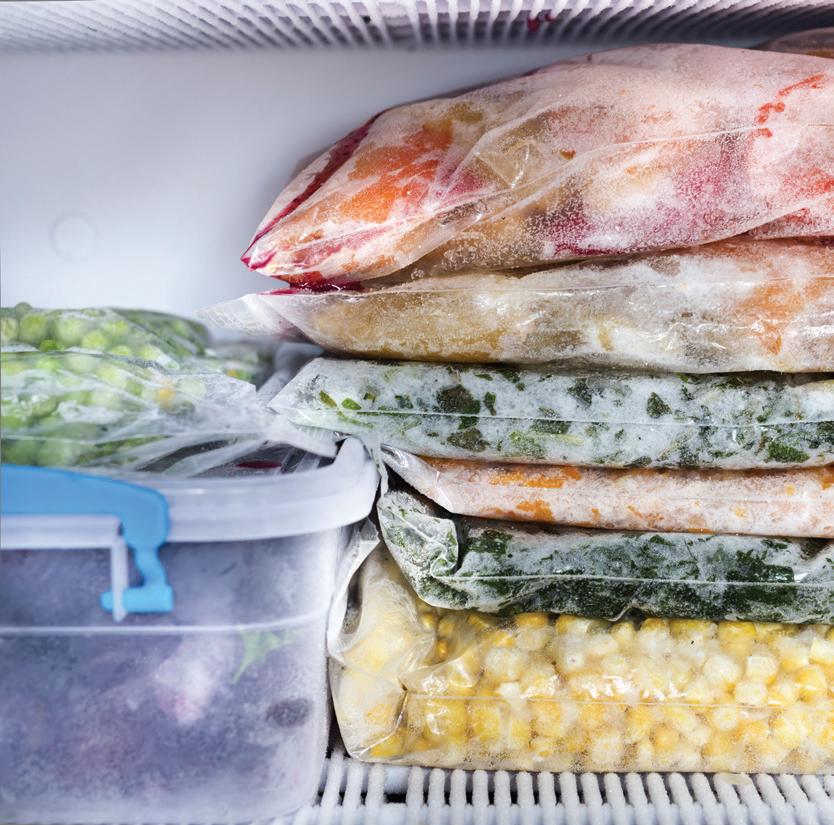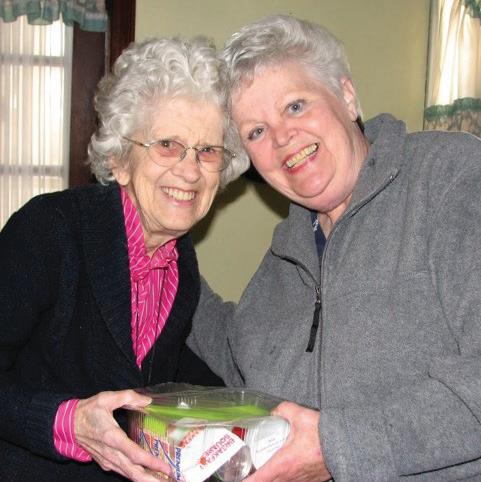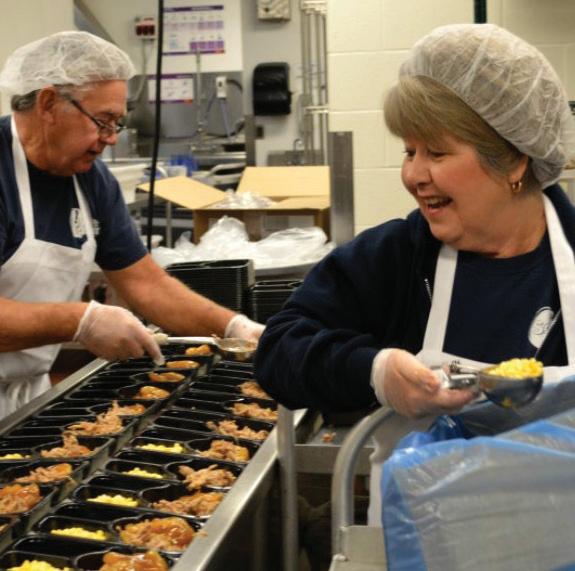
6 minute read
What's in Your Freezer this Winter?
PREPAREDNESS What's in Your Freezer this Winter?
A stocked icebox can make life easier in unpredictable times
Advertisement
When COVID-19 hit, many people realized that freezers could do much more than hold a few frozen pizzas and ice cream. It became an essential part of food storage in the kitchen and a way to prepare in an increasingly erratic time. When it comes to shortages of certain food items, limiting trips to the grocery store to prevent virus exposure, and stocking up on prepared meals in case of illness or to deliver to a struggling friend, the freezer plays an essential role. But keep a few things in mind so you end up with the ingredients you need or a delicious meal, while avoiding dreaded freezer burn. Here's how to get the most out of your cold food storage.
Avoid freezer burn
To stave off the icicles that can make their way into frozen foods, make sure you are freezing items properly. For starters, always freeze food once it has cooled down, not while it's still hot. Make sure you get as much air out of your storage container as possible and seal tightly to prevent air from getting in and causing freezer burn. You don't need fancy packaging to freeze things. Plastic “freezer bags can work great for things like soup, plus they can freeze flat so they take up less room,” says executive chef Jeff Stamp of Hampton + Hudson in Atlanta. If you are freezing leftovers, wrap them in foil first for extra protection before putting them into a zip-top plastic bag. A vacuum sealer to suck all the air out helps food last just a little bit longer. You'll also want to make sure to freeze what private chef Ian Martin calls “mono meals,” or each type of food separately, since you'd typically reheat at the same temperature and time. If, for example, you've frozen a meal of pork chops, green beans, and potatoes all in the same container, reheating can get tricky. “It's the worst when you have a perfect burger, but your broccoli is overheated and gummy,” Martin says.
Organize your freezer space
You should have a variety of foods in your freezer. To save trips to the grocery store this winter, make sure to have a selection of healthy staple items—chicken, fish, frozen vegetables and fruits, and maybe even a few healthy frozen meals in a pinch. (We won't tell if you stash your favorite ice cream or chocolate in the freezer, too.) Most importantly, don't let your freezer become a bottomless pit where you can't find anything. Create an organizational system for your freezer—just like you would for the fridge or pantry. "The number one thing I'm going to recommend that you do is to label the foods that you freeze,” says Amy Gorin, a registered dietitian in the New York City area who specializes in plant-based foods. “Add the dates and use the first-in, firstout system so that you place older items toward the front of the freezer, so they get used up first.”
Extend the life of ingredients
Overripe bananas, spinach that's just starting to wilt, and a garden surplus are all great ingredients to put in the freezer. Chef Andrew Iwansky from restaurant Datz in Tampa loads up berries at the end of each summer to use throughout the year. He throws them in yogurt and smoothies, cooks them into oatmeal, or adds them to pancakes. Martin consumes lots of fruits and vegetables to help stay healthy and combat stress, but he cautions, “Keep in mind that high-water-content foods will be best for juicing or blending, but not great for thawing and eating.” So throw those extra vegetables into a smoothie or soup. You can even freeze fresh herbs in an ice cube tray. You can either place chopped herbs in the tray and pour boiling water over them (to blanch them and retain color) before you freeze them, or you can freeze them in olive oil to create an infused oil great for pastas. Just pop out a cube to add to sauces, dressings, or pastas. It doesn't hurt to just have a few bags of store-bought frozen vegetables on hand, too, for a quick side or addition to fried rice or pastas. Source: Samantha Lande, AARP. Learn more at aarp.org.
Making and Freezing Extra Meals
From page 1 The freezer is a great place to store extra meals for a friend in need, a guest over for a last-minute dinner, or
small amounts? on a night where you just don't feel like cooking.
1.
Freeze in appropriate portions. Consider what one serving would be like and freeze in portions that make sense for your use. If you are cooking for a family or a friend's family, adjust sizes accordingly.
Make an extra batch of whatever you cook for a
freezer meal. If you are making meatballs or lasagna, it's much easier to double the recipe than to have to make it again just to freeze. Eat one now and freeze one for later.
Soups and chilis freeze very well and heat up quickly.
Freeze a portion or two each time you make soup and you'll have a great variety later on.
Don't discount breakfast. Muffins, breakfast burritos, even banana bread (just slice before freezing) make great additions to the freezer.
A little treat. Cookie dough can often be frozen, and you'll be able to throw a fresh batch of cookies into the oven quickly.
Malnutrition
Be aware. Ask older adults or their caregivers these questions: • Have you had weight loss without trying? Has your appetite changed? Are you not able to eat well or only able to eat
Find some freezer-friendly recipes on page 30.
Do you feel weak or tired? Have you had swelling or fluid accumulation? If any of these questions are yes, suggest they contact their medical provider and set an appointment with a Registered Dietitian Nutritionist.
Support organizations that help fight malnutrition
There are a number of webinars, resources, and patient stories available at nutritioncare.org to help spread the word. Partner with local food pantries and local congregate and home-delivered meal service providers—like SourcePoint— to help identify older adults in need and give your time by volunteering, donating food, or donating money. Connect older adults to resources in your area by helping them with a Benefits CheckUp at benefitscheckup.org or by using the national Eldercare Locator at eldercare.acl.gov. Source: Meredith Ponder Whitmire, Generations, American Society on Aging. Learn more at generations.asaging.org.


Help Set the Table for Future Seniors
By providing about 250,000 meals to Delaware County seniors each year, SourcePoint delivers the nutrition, friendly connections, and safety checks that help seniors live safely in their own homes. To ensure our made-from-scratch meals continue as our older population increases in the coming years, we rely on donations to boost our funding. The support of our community ensures that we are able to serve more seniors today—and in the future. When you contribute to SourcePoint’s Meals on Wheels program, you’re investing in a better life for the seniors in our community. You become our partner not only in providing nutritious meals, but also in enabling local seniors to maintain their independence and quality of life. We are grateful for every donation, regardless of the amount. Moreover, we are grateful for you. You are part of our mission to help our community set a course to live well after 55. Make an impact at MySourcePoint.org/give today.










